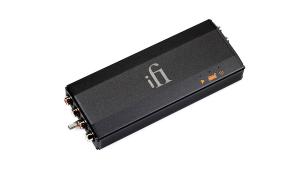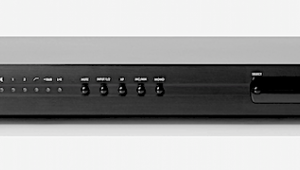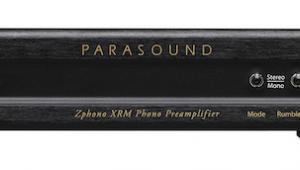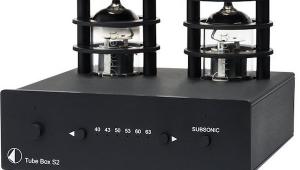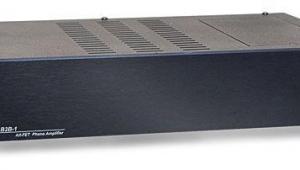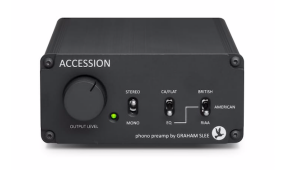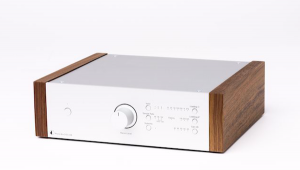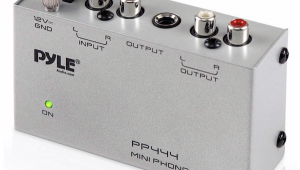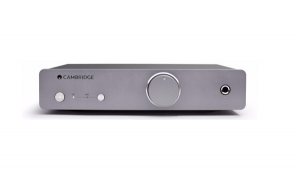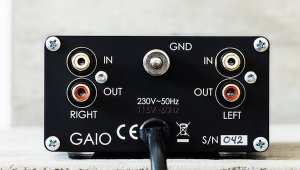ASR Basis Exclusive phono preamplifier Page 2
Against the Steelhead
Switching back to my reference Manley Steelhead phono preamp presented a completely different take on the same music: a more mellow overall balance, softer transients, and greater emphasis on midbass warmth. This made for a smoother balance that was easier to listen to yet still had plenty of detail—but it couldn't match the ASR's sheer excitement, or its ability to resolve the lowest-level detail in stark relief, all without sounding bright, etched, or hyper-detailed. Some listeners might prefer a bit more midband plushness, but a great deal can be accomplished by experimenting with cartridge loading. Still, I'm sure some will find the Exclusive's sound a bit too stark, perhaps too literal and a tad mechanical. I didn't.
I compared the Steelhead and the ASR with the classic Mercury Living Presence LP of Aaron Copland's Rodeo, El Salán México, and Danzán Cubano, recorded in 1957 (!) by Antal Dorati and the London Symphony (SR90172). I found the ASR's overall presentation in fully balanced mode airier, more transparent, deeper, wider, and more dynamic overall. The brass had a lifelike, piercing, yet plush realism that the more softly sprung Steelhead couldn't equal, and there was no match in the reproduction of the thwack of the timpani, which had far greater impact through the ASR.
It was an impressive presentation of a recording that, like many Mercurys, can sound thin and ungrounded. Perhaps my Steelhead is finally due for new tubes—because what the ASR did best in the mids, upper mids, and highs is what one usually expects from tubes! Yet some will prefer the Manley's lush, more mellow rendering compared to the brash, tightly sprung ASR's. Through both phono sections, when it got to the part of which composition copped by the Beef Council (or whatever the trade organization is called) for its television ads touting beef, my mouth watered.
I didn't see Bruce Springsteen in concert this summer, but I played much of his extraordinary-sounding Live in New York (Columbia C3 85490), cut from the high-resolution digital master and issued by Columbia on three LPs in 2001. The ASR's production of a 3D soundstage, with transparent yet solid images, small- and large-scale dynamics, and crystalline high frequencies produced an eerie likeness of being there that had me feeling the breezes of Giants Stadium. Switching to a Japanese pressing of Mel Tormé and the Meltones' Back in Town produced a totally different, far more laid-back sound, proving that the ASR could roll easily with the sonic punches without tripping over its own feet.
Conclusions
Its transparency, speed, and noticeable lack of midbass warmth mean that the ASR Basis Exclusive will not appeal to everyone or be appropriate for every system. But using the revealing Wilson Audio Specialties WATT/Puppy 7s, there was not a musical genre that didn't benefit from the ASR's strong suits: rhythmic snap; among the deepest, cleanest, most dynamic bass I've heard; and midrange and high-frequency transparency and clarity without etch, grain, or brightness. The ASR hung together rhythmically as well as any phono preamp I've heard. For $4950, you get two complete phono preamps, and you'll save money on expensive AC cables. (But if you think the battery will charge with better sound when using an expensive AC cord, you're nuts.)
Leaving aside the $29,000 Boulder 2008, which is in a class by itself, the ASR Basis Exclusive joins a handful of the finest phono preamplifiers I've heard. It's different from but on the same plateau as the Manley Steelhead and the Zanden 1000MC—and that's saying a great deal. While the Exclusive's fully balanced operation sounded best, its single-ended performance was not far behind.
A big, pleasant surprise, and a shock to my system. I absolutely loved the ASR Basis Exclusive.
Michael Fremer returned to the Basis Exclusive in February 2007 (Vol.30 No.2):
I reviewed ASR's Basis Exclusive—a fully balanced, battery-powered, moving-magnet/coil phono preamplifier—in the October 2003 "Analog Corner." Since then that exceptionally fine performer has been subtly upgraded, and now operates at slightly higher voltages.
The Basis Exclusive Revised ($6200) comprises two discrete, independently operable phono preamps, each based on an exceptionally quiet and pure-sounding microphone-preamp op-amp from Analog Devices. Inside the acrylic chassis (designer Friedrich Schäfer is against metallic enclosures) are DIP switches that permit an exceptionally wide range of options in gain and resistive loading, all independently adjustable for each of the two preamps. Please see my original review for more details.
My system has changed in so many ways since then that it's impossible for me to tell you exactly what ASR's upgrades might sound like. But listening to the latest version, the ASR Basis Exclusive remains one of the top five phono preamps I've ever heard. It combines the jet-black backgrounds found in the hideously expensive (and worth it) Boulder 2008 ($29,000) with the lush suppleness of Balanced Audio Technology's VK-P10SE ($8000), but its dynamic presentation and tight-fisted rhythmic authority are closer to the Boulder's.
My reference phono preamp is the Manley Steelhead ($7300); its overall balance is still what best suits my system, and continues to provide me with everything I want from a phono preamp. I'm no gear churner, I'm a music lover. If you're looking for stellar dynamic contrasts, lightning-fast, super-clean transients set against black backgrounds, and supple (though not warm and rich) musicality, the ASR Basis Exclusive Revised should be on your very short list, though if you want—or your system's balance cries out for—an injection of warmth, especially in the midbass, the Basis won't deliver it. But if you consider its price, versatility, and stellar sound, it's easily the best value in top-shelf phono preamps.—Michael Fremer
- Log in or register to post comments






